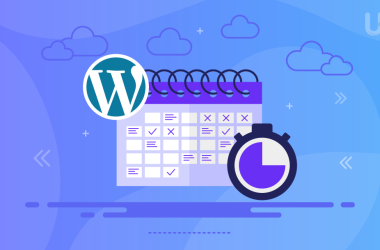The issue of security in web applications comes to the forefront in today’s digitally connected world. Cross-site scripting, also known as XSS, is one of the most pervasive and dangerous vulnerabilities impacting online security. XSS attacks may lead to the disclosure of sensitive data, hijacking user sessions, and even defacing websites; they are highly detrimental to both users and organizations. That is why XSS knowledge should be available to all developers, security professionals, and end-users: mechanisms, types, and prevention methods.
In this article, we minutely explain the intricacies behind Cross-Site Scripting, the inner workings of an attack, and the steps through which it could be mitigated.
What is Cross Site Scripting?
Cross-site scripting (XSS) is a security vulnerability usually found in Progressive Web applications and is prevalent in PHP and various other programming environments. It allows hackers to inject malicious scripts within the web pages users view. The malicious script executes in the browser of unsuspecting users who visit the attacked page, gaining access to steal data, hijack sessions based on the exploits’ nature, or even deface websites.
XSS exploits the trust of users on some websites. The attackers manipulate a website’s code in such a way that, from the trusted site, it executes their scripts; hence, it is hard for the user to differentiate between what is legitimate and what is malicious. By contrast, unlike other forms of web vulnerabilities, like SQL injection, the principal target via XSS attacks differs since this attack targets the user and not precisely the web application.
How Does XSS Attack Work?

The flow of a typical XSS attack is as follows:
- Identify Vulnerability: Any input field inside the web application that does not sanitize user inputs properly is a vulnerability. This includes everything from the comment section to the search bar.
- Inject Malicious Script: The attacker injects a malicious script in the input field. This might do many things, such as stealing cookies, logging keystrokes, and redirecting people to one of his malicious sites.
- User Interaction: If another user visits the compromised webpage, then the injected malicious script fires in that browser. This will have the same privilege level as other valid scripts on that website, creating a situation that is hardly detectable.
- Execution and Exploitation: The script executes malicious purposes, either by stealing sensitive information, transforming the website’s appearance, or further propagating it through attacks on other users.
Types of XSS
Cross Site Scripting (XSS) attacks come in various forms, each exploiting different mechanisms to inject and execute malicious scripts. Understanding these types is crucial for implementing effective defenses. There are three main types of XSS attacks:
Stored XSS
Stored XSS is also known as persistent XSS. Here, the malicious script will be stored on the target server, which can be hosted in multiple locations. Each has its target stored in a database, message forum, comment field, or other data-storing form. When users request this mixed content, the injected malicious script will issue to and run in their browsers.
Stored XSS is particularly dangerous because it may affect hundreds of users and will persist over some time. For example, if a malicious attacker posts a malicious script in the comments of a forum post, then all people viewing such a comment will end up executing the malicious script in their browsers. As a result, this could cause extensive stealing of data, session hijacking, or execution of unauthorized actions on behalf of the affected users. This makes stored XSS quite a severe threat in that it does not sleep but is persistent until the malicious script is somehow noticed and scrubbed from the server.
Secure Your Web Applications with Robust Hosting!
Looking to protect your web apps from XSS attacks? Choose UltaHost’s Cloudflare Hosting for unparalleled security, performance, and reliability. With advanced security features, you can ensure your web applications are safe from malicious attacks.
Reflected XSS
Reflected XSS is a variant of an attack wherein the malicious script is reflected off a Web server, most commonly via a URL or input mechanism that gets processed immediately and returns to the user. Secure server management practices, such as SSH VPS, can help mitigate these vulnerabilities by ensuring rigorous input validation and protection mechanisms. In this kind of attack, the attacker would forge a URL that contains the malicious script. After a user clicks the link, the server processes the input and reflects it to the user’s browser for execution.
Reflected XSS attacks typically attend with phishing schemes. The attacker must convince the user to click a specially crafted link. Viewed from another aspect, these kinds of attacks require some form of interaction. An attacker may mail or send an instant message, including a link to a website that appears legal but includes a malicious script in the URL.
This script can, therefore, be executed when clicked and may steal sensitive information or perform actions for that user without his consent.
DOM-based XSS
Finally, DOM-based XSS, or Document Object Model-based XSS, is a vulnerability existing in client-side code instead of being on the server. Here, the attacking script will modify the DOM of the webpage to execute the attack. All this happens within the user’s browser and does not result in malicious data being sent to the server. What distinctively applies to DOM-based XSS is exploiting modern web applications where robust and client-side script use brings interactivity and dynamism to content.
The attack vector for DOM-based XSS is different from stored and reflected XSS. It targets the DOM environment to modify the page’s structure or behavior. This could be to inject a script that will change form content or redirect the user to a malicious website. Since none of the payloads ever leaves the client, traditional server-side defenses are pretty useless against DOM-based XSS. For this reason, it is one of the more difficult attack types to detect and mitigate.
How To Prevent XSS Vulnerabilities
Prevention of XSS requires good coding practice, input data validation, and proper output encoding. The following are vital countermeasures to prevent XSS vulnerabilities:
- Input Validation: All user inputs should be validated and sanitized. This is where special characters and scripts that may turn out to be harmful need to be removed. Create an allowlist of safe inputs; shred any input that doesn’t correspond to this list.
- Output Encoding: Before any output is returned to the browser, it must be appropriately encoded. This ensures that even if malicious scripts are injected, they are not executed as code. Use libraries and frameworks that provide an automated mechanism to encode the output.
- Use Security Headers: This involves setting up HTTP security headers, including Content Security Policy. It restricts the locations from which content can be loaded, preventing malicious scripts from being executed in your app.
- Escape Data: When displaying user inputs on a web page, ensure the data is appropriately escaped. It prevents the browser from executing the data as code. You can also take advantage of secure WordPress hosting to secure your web apps.
- Implement a Web Application Firewall (WAF): A Web Application Firewall can help detect and block malicious traffic, including attempts to exploit XSS vulnerabilities. By filtering and monitoring HTTP requests, a WAF provides an additional layer of security, helping to protect your web application from various types of attacks.
- Regular Security Audits: Regular security audits and code reviews must be carried out to identify any potential vulnerabilities and give room for rectification. Automated tools must be used to sniff XSS and other security vulnerabilities.
- Educate Developers: Train and educate developers on secure coding practices, emphasizing the necessity of preventing XSS vulnerabilities. Awareness and education are critical in infusing a security-conscious development culture.
Conclusion
Cross-site scripting can be very dangerous for a web application’s security. It can be lethal for the organization and the end-users. Knowing how XSS works, its types, and appropriate prevention methods will help safeguard web applications against this type of attack. Using robust security practices, frequent auditing, and instilling a culture of security awareness can drastically reduce the risk of XSS vulnerabilities, ensuring a safe web experience for everyone.
Protect your web applications from XSS vulnerabilities with robust security measures. Consider opting for a Managed Dedicated Server from UltaHost to ensure proactive monitoring and strong defenses against potential threats.
FAQ
Can XSS attacks affect mobile applications?
Yes, XSS attacks can affect mobile applications, particularly using embedded web views or hybrid frameworks that render web content.
What kind of damage can an XSS attack cause?
An XSS attack can lead to various types of damage, including theft of cookies, session hijacking, unauthorized access to sensitive information, defacement of websites, and malware distribution to other users.
How can users protect themselves from XSS attacks?
Users can protect themselves by avoiding clicking on suspicious links, ensuring their browsers are up to date, using browser security extensions, and being cautious when entering information on unfamiliar websites.
What role do Content Security Policies (CSP) play in preventing XSS?
Content Security Policies (CSP) help prevent XSS by specifying which content sources the browser can load and execute.
Are there automated tools to detect XSS vulnerabilities?
Yes, automated tools and scanners such as OWASP ZAP and Burp Suite are available to detect XSS vulnerabilities in web applications. These tools can help identify and mitigate potential security risks by analyzing the code and simulating attack scenarios.









